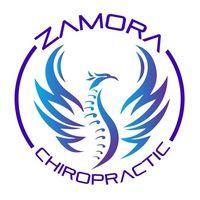Hello! Dr. Jose Luis Zamora here, your friendly neighborhood chiropractor in Altamonte Springs, Florida! February is American Heart Health Month, and with cardiovascular health at the forefront of wellness concerns in today’s society, finding natural ways to support heart function is essential. While chiropractic care is often associated with spinal health and pain relief, it also has a positive impact on cardiovascular health. This connection may seem surprising, but when we consider how closely the spine, nervous system, and cardiovascular system are linked, the benefits become clear. Here’s a closer look at how chiropractic care can support your heart health naturally.
1. Understanding the Spine’s Role in Heart Health
The spine is more than a structure for stability; it’s the central hub for the nervous system, which controls nearly all bodily functions, including the cardiovascular system. Misalignments in the spine, or subluxations, can disrupt nerve signals from the brain to the heart and blood vessels. These disruptions can cause the body to compensate, increasing stress on the heart and blood vessels. Chiropractic adjustments restore proper spinal alignment, allowing nerves to function as they should, which may benefit the cardiovascular system over time.
2. Reducing Stress, a Key Factor in Heart Health
Stress is one of the biggest contributors to heart health issues, leading to high blood pressure, increased heart rate, and elevated levels of cortisol (NHLBI, 2021). Chiropractic care helps reduce physical tension by improving spinal alignment, which can in turn lower stress levels (Budgell, 2008). Additionally, chiropractic adjustments stimulate the parasympathetic nervous system, which induces a “rest and digest” state, allowing the body to relax and recover. By reducing stress, chiropractic care supports heart health by promoting lower blood pressure and a more balanced heart rate (Cagnie et al., 2020).
3. Supporting Blood Flow and Circulation
Proper spinal alignment is essential for optimal blood flow. When there are misalignments in the spine, muscles and joints may become tense, impeding blood flow and placing unnecessary strain on the heart. Chiropractic adjustments alleviate these misalignments, reducing muscle tension and improving circulation throughout the body. Improved circulation ensures that the heart doesn’t have to work as hard to pump blood, reducing strain and supporting cardiovascular health.
4. Lowering Blood Pressure Naturally
High blood pressure is a leading cause of heart disease, and research suggests that chiropractic adjustments can help lower blood pressure naturally. A study published in the Journal of Human Hypertension found that chiropractic adjustments to the atlas vertebra (the top vertebra in the spine) could lower blood pressure significantly (Bakris et al., 2007). In fact, these adjustments had effects similar to taking two blood pressure medications simultaneously. By reducing nervous system interference, chiropractic adjustments support natural blood pressure regulation, helping protect the heart.
5. Reducing Inflammation, a Risk Factor for Heart Disease
Chronic inflammation is a major contributor to cardiovascular issues, as it damages blood vessels and accelerates plaque buildup in the arteries. Chiropractic care helps reduce inflammation by addressing misalignments that contribute to stress and strain in the body (Libby et al., 2022). By restoring alignment, chiropractic care can lower inflammatory responses, which in turn reduces strain on the cardiovascular system. With less inflammation, the heart and blood vessels are better protected against the risks of heart disease.
6. Encouraging Heart-Healthy Habits Through Chiropractic Care
Chiropractors are often committed to whole-body wellness, which means they can provide guidance on lifestyle changes that support heart health. Chiropractors may recommend exercises to improve posture, advice on ergonomic habits to prevent physical strain, and tips on nutrition that promote cardiovascular health. This holistic approach helps patients create a lifestyle that benefits not only the spine but also the heart and entire body. Chiropractic care, therefore, becomes part of a comprehensive strategy for supporting cardiovascular health.
Tips to Maximize Cardiovascular Health with Chiropractic Care
To make the most of chiropractic care’s heart health benefits, consider pairing it with other cardiovascular-friendly habits:
- Stay Active: Exercise promotes circulation and strengthens the heart.
- Eat Heart-Healthy Foods: Prioritize foods rich in omega-3 fatty acids, fiber, and antioxidants.
- Practice Mindfulness and Stress Reduction: Techniques like meditation or breathing exercises complement chiropractic care’s stress-reduction benefits.
- Get Quality Sleep: Adequate rest supports heart health and overall wellness.
- Stay Hydrated: Proper hydration aids in circulation and helps maintain healthy blood pressure.
Final Thoughts
Your heart health is essential to your overall well-being, and taking a natural, holistic approach to cardiovascular care can make a significant difference. While chiropractic care is often associated with spinal health, its benefits extend to heart health by improving nervous system function, reducing stress, enhancing circulation, lowering blood pressure, and decreasing inflammation. By incorporating chiropractic care into your wellness routine—alongside exercise, proper nutrition, stress management, and good sleep—you can support your heart in a way that is natural and sustainable.
As we recognize American Heart Health Month, take this opportunity to prioritize your cardiovascular well-being by scheduling an appointment with Zamora Chiropractic today. Your heart works hard for you—give it the care and support it deserves!
Resources
Libby, P., Ridker, P. M., & Maseri, A. (2022). Inflammation and atherosclerosis. Nature Reviews Cardiology, 19(11), 739-755. https://pubmed.ncbi.nlm.nih.gov/36361701/
Bakris, G., Dickholtz, M., Meyer, P. M., Kravitz, G., Avery, E., Miller, M., Brown, J., Woodfield, C., & Bell, B. (2007). Atlas vertebra realignment and achievement of arterial pressure goal in hypertensive patients: A pilot study. Journal of Human Hypertension, 21(5), 347-352. https://pubmed.ncbi.nlm.nih.gov/17252032/
Budgell, B. (2008). Reflex effects of subluxation: The autonomic nervous system. Journal of the Canadian Chiropractic Association, 52(4), 237-244. https://pmc.ncbi.nlm.nih.gov/articles/PMC2686395/
Cagnie, B., Petrovic, M., Coppieters, I., Van Oosterwijck, J., Danneels, L., & Nijs, J. (2020). Central sensitization in chronic pain: A systematic review on structural and functional brain MRI findings. Pain Physician, 23(2), 111-136. https://pmc.ncbi.nlm.nih.gov/articles/PMC7526060/
National Heart, Lung, and Blood Institute. (2021). Study links high levels of stress hormones to increased blood pressure, cardiovascular events. https://www.nhlbi.nih.gov/news/2021/study-links-high-levels-stress-hormones-increased-blood-pressure-cardiovascular-events
Zamora Chiropractic
-
Jose Zamora Doctor of Chiropractic
- February 19, 2025
- (407) 801-0820
- Send Email



